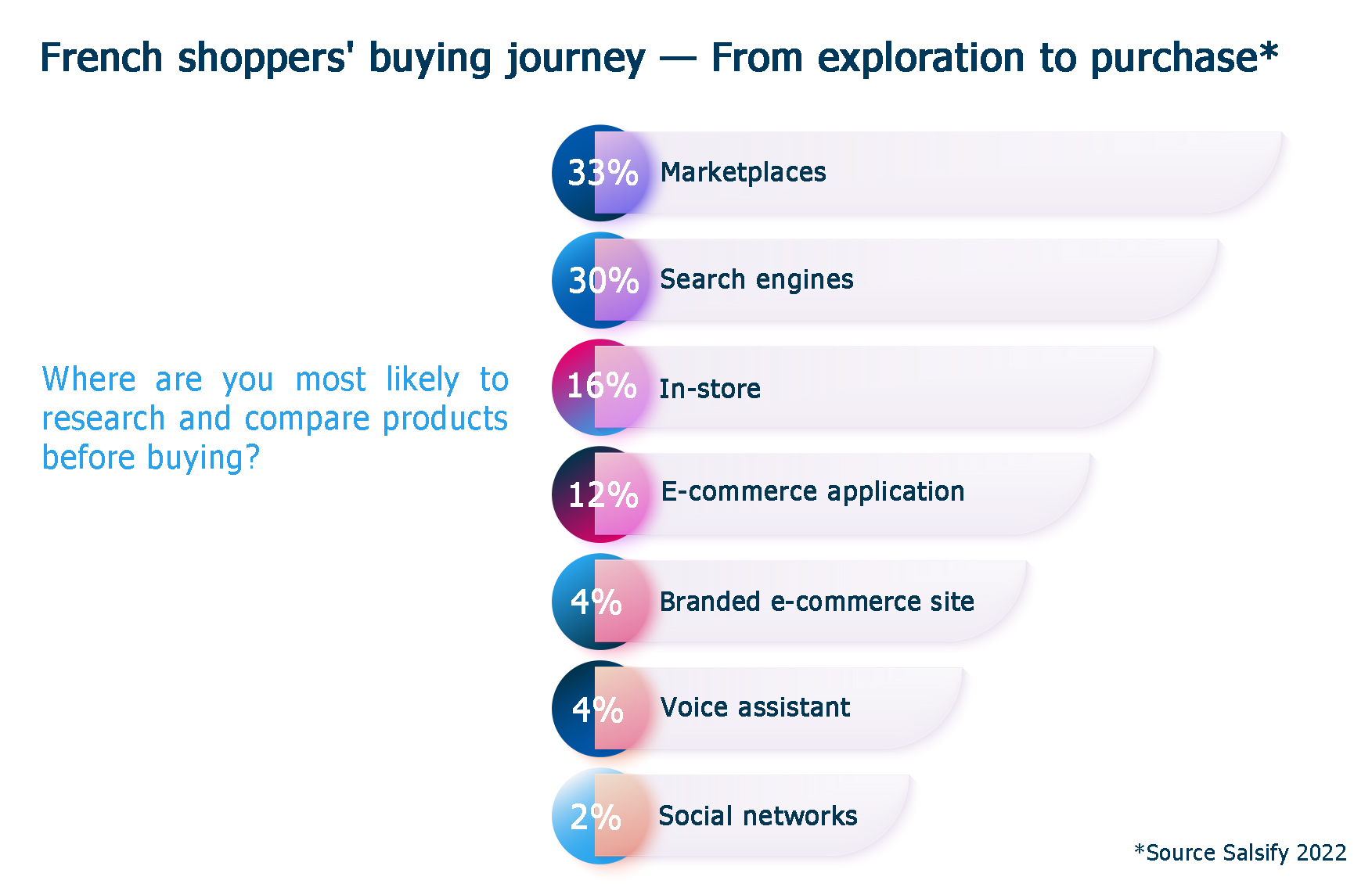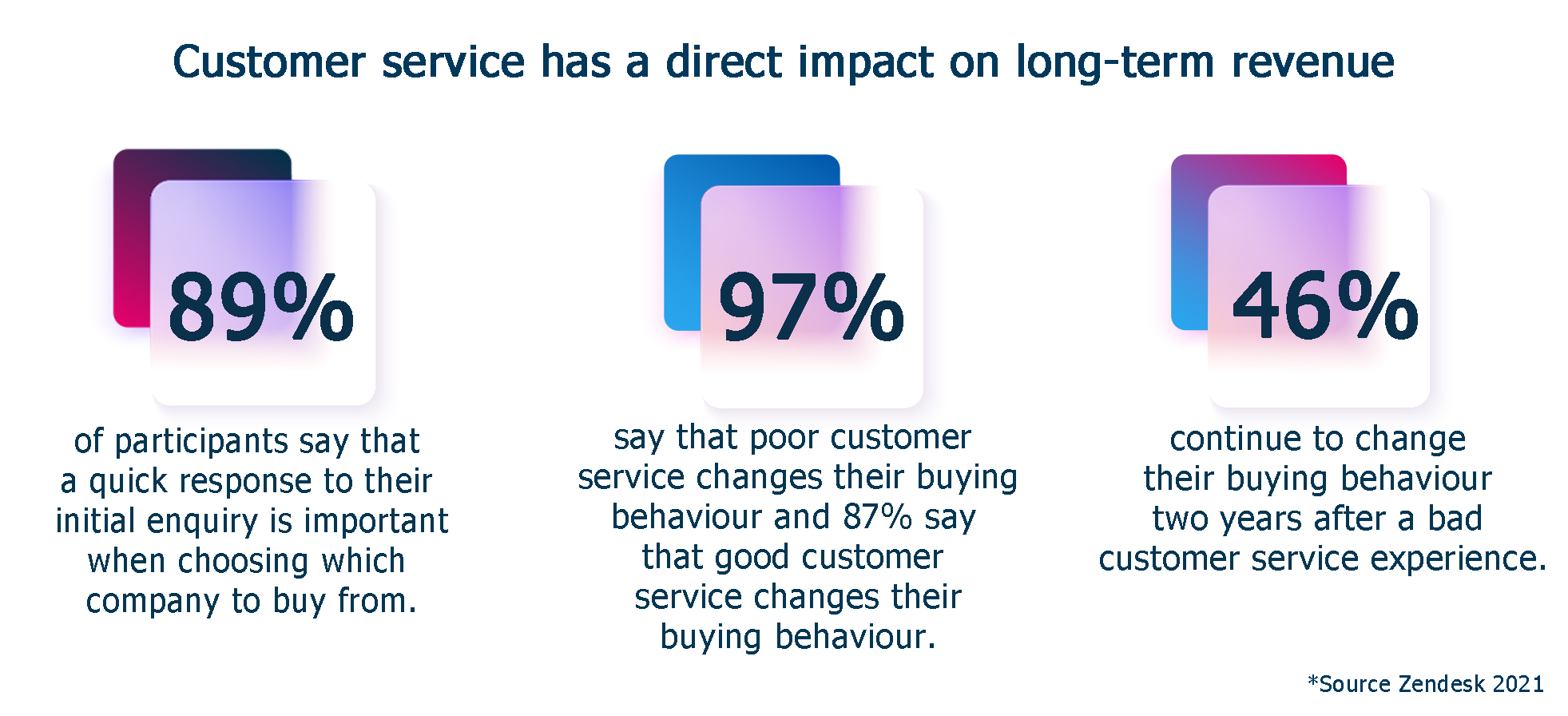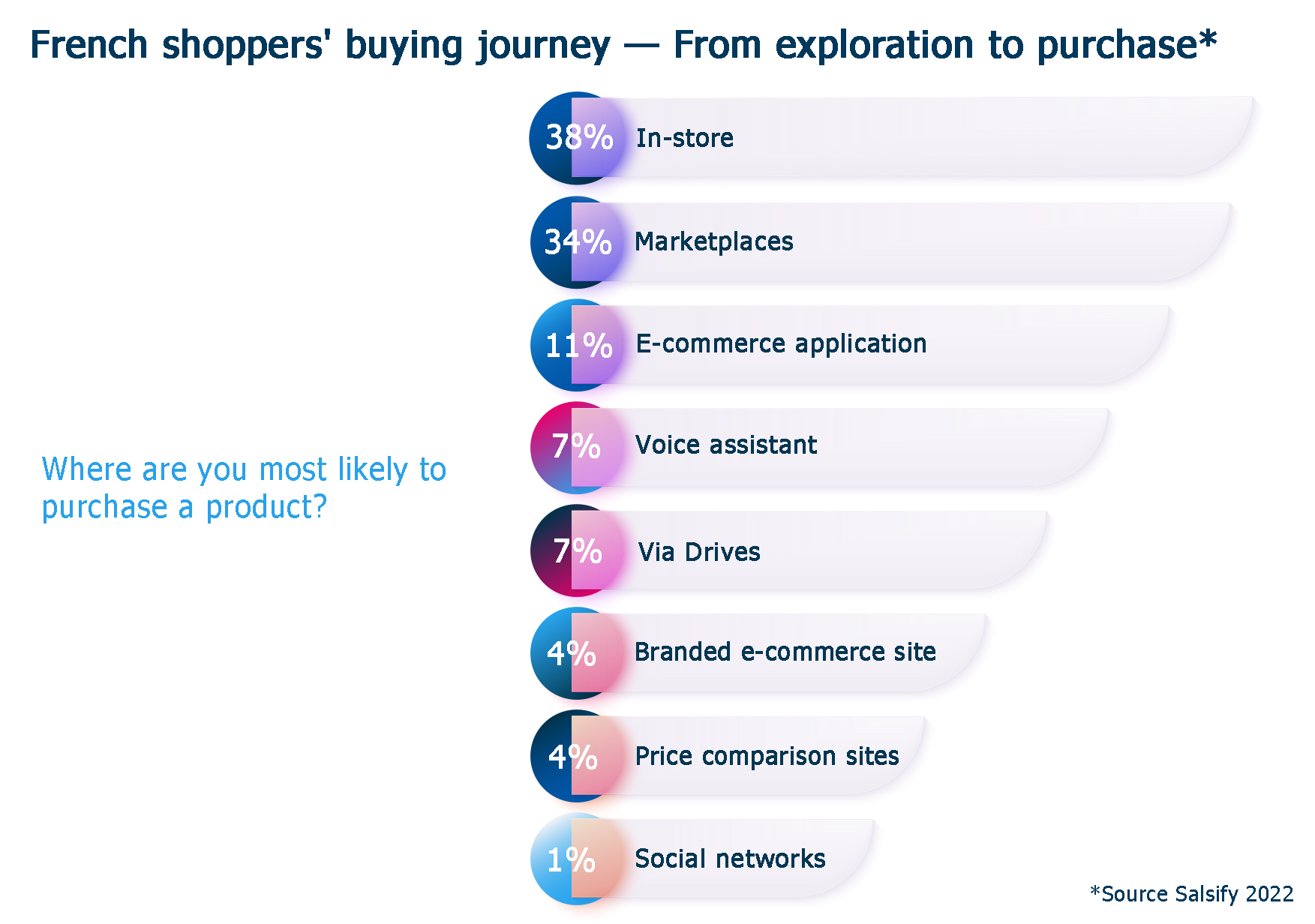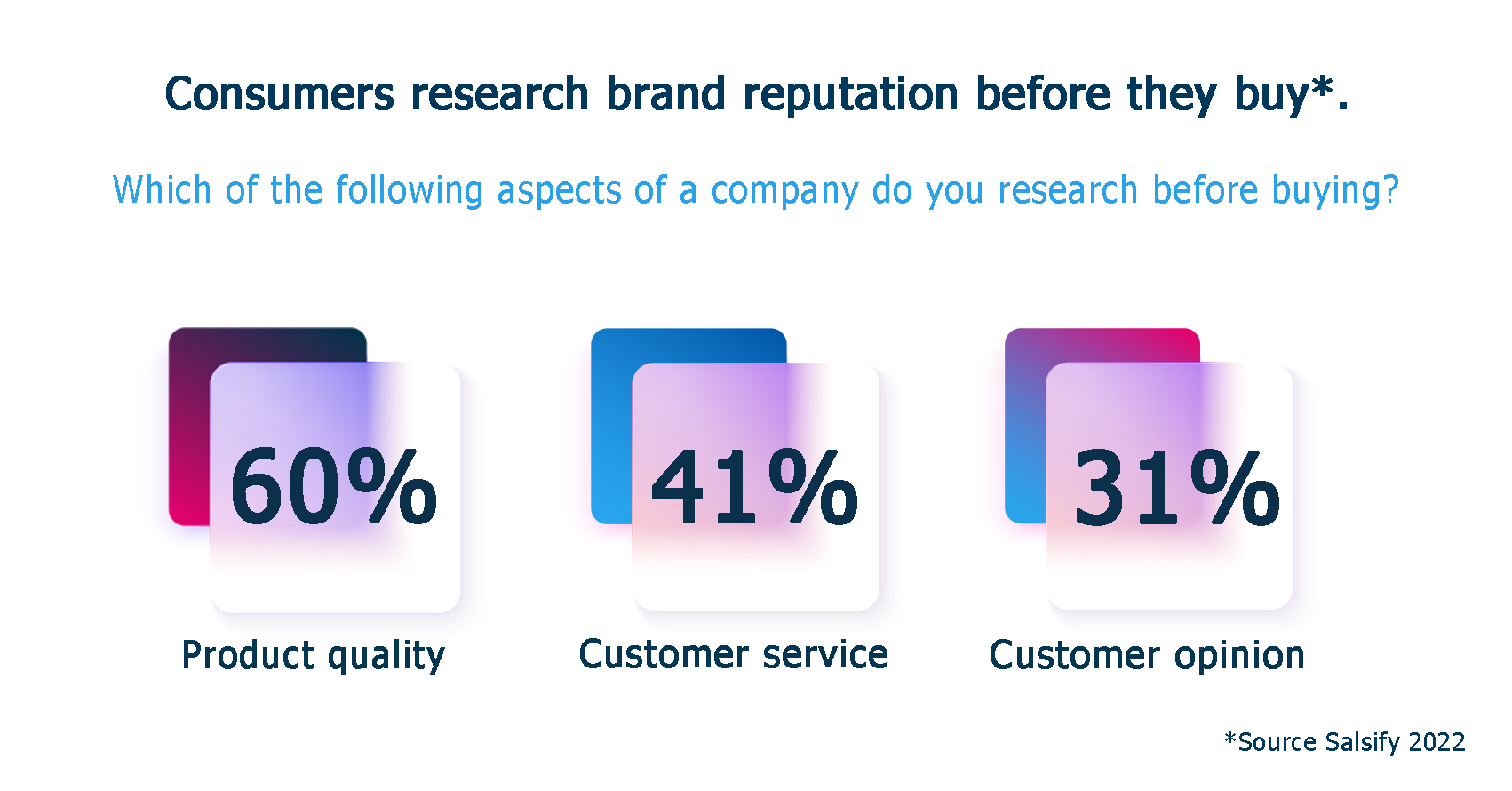You are often told that to take your customer experience to the next level, your e-commerce site must be intuitive, you must have an excellent returns policy, your product sheets must be fantastic and your payment process must be smooth…
But what about your communication with your customers or future customers?
SUMMARY
- Omnichannel customer journey, omnichannel communication!
- Good pre-sales communication promotes the buying experience
- The strategic challenge of after-sales customer relations
a. Definition of a customer irritant
b. The importance of the after-sales service for an optimal customer experience
c. Customer relations on marketplaces - The causes and consequences of poor customer communication
1. Omnichannel customer journey, omnichannel communication!
This is a subject that is not often considered, but which should not be overlooked in e-commerce. Today, online shoppers are pushing their demands to the limit. They expect a before and after-sales relationship with sellers that is as fluid and human as it is in the store… In fact, omnichannel strategies are gradually breaking down the silos between physical and digital spaces to make way for the need for homogeneous communication at the same level, whatever the point of contact.
While it is important to have a presence across multiple sales channels, your brand’s reputation in the marketplace, as well as the quality and completeness of your product offering, are equally valuable. According to Salsify, 44% of French consumers say they are willing to choose the more expensive product between two identical items if it is from a brand they trust. While 34% are ready to spend more for a product with better ratings and 31% for a faster delivery.
As you can see, building value and trust in your brand depends largely on good communication and successful customer relationship management.😉
Faced with consumers who successively or simultaneously use the various channels available to them (website, marketplaces, price comparison sites, applications, social networks, physical points of sale, etc.), customer relations must also be omnichannel.

Whether you are an e-retailer or a pure player e-merchant, you need to be aware that customer communication is no longer confined to package returns, it now covers the entire purchasing process:
- In the pre-sales phase, to support and inform customers when handling increasingly large e-commerce carts.
- During the purchase, to assist and reassure them.
- Post-purchase, when the transaction is finalised. In addition to potential sticking points, after-sales is now extended to helping the customer to use the product properly…
However, the stakes are different depending on whether we are talking about pre-sales communication or after-sales customer relations… Let me explain 👇
2. Good pre-sales communication promotes the buying experience
Just like in a physical store, customers want information about the product(s) they want to buy. What is its consumption? How do they use it on a daily basis? Does it come in red? Etc.
The requesting customer is usually in a positive frame of mind at this stage of the buying process.
They are of course comparing several similar offers and want to know more about your product. This is clearly the right time to generate a sale! It would be a shame to let this kind of opportunity slip through your fingers, wouldn’t it? All the more reason to be reactive. 😅
Managing enquiries well will maximise your conversion rate and reduce cart abandonment. All the more so if it’s a large cart.
For example, certain expensive products can be a source of doubt for the buyer, who needs to be reassured from the outset in order to convert their purchase.

Note that this potential customer may not buy on the marketplace in question but on another one, directly on your
e-commerce site or in-store.
In any case, an optimised buying path requires concrete product sheets, an omnichannel strategy (marketplace, Google Shopping, your e-commerce site and an Instagram shop) and good communication!

3. The strategic challenge of after-sales customer relations
a. Definition of a customer irritant
As its name suggests, a customer irritant is a negative element in the buying process that affects the customer to a greater or lesser extent, because the customer considers, rightly or wrongly, that this element could be better managed by the seller.
It mechanically generates dissatisfaction, or even resentment, towards the brand or merchant, which can eventually be a source of attrition or even sometimes damage the brand’s reputation.*
In general, the irritations of e-commerce customers are focused on the following problems:
- Delivery: packages arriving late, damaged, product broken, lost…
Surrounding themselves with trusted carriers, strengthening their packaging and evaluating delivery times is an imperative for sellers - Product purchased: doesn’t meet the customer’s expectations: size, colour, quality, etc.
- Language: customer service in a language foreign to the country of delivery.
Selling products internationally requires keeping an eye on the language requirement which could aggravate a foreign buyer’s frustration. - Stockouts
- Promo codes that don’t work
- Not getting an immediate answer to a question: on the merchant site, on the marketplace, etc. Wanting to get in touch with a seller, a brand and not being able to, leads to a feeling of frustration in the buyer, which is exacerbated if the message is problem-related.
- Etc.
* Marketing.com definition
b. The importance of the after-sales service for an optimal customer experience
Up to now, providing good customer service was the responsibility of shops or online sales sites. Today, a brand’s or vendor’s customer services must extend to selling on other e-commerce channels.
Quality after-sales service and good customer communication is a sine qua non condition for integrating most marketplaces.
Whatever the point of contact and although the seller is confident about the quality of the products delivered, problems may nevertheless arise. In this case, it is obviously unthinkable to drop the aggrieved customer, even for what we may consider to be a minor problem. We need to consider and propose the appropriate solution.
Note that, in addition to assistance, the main objective of the after-sales service is to build customer loyalty. In a world where omnichannel is the order of the day, a bad customer experience on a marketplace can have repercussions on your other points of sale. Sellers must therefore ensure good communication and customer experience at all points of contact.
Consumers choose a brand for the experience it provides, so customer service needs to be reactive and agile.

c. Customer relations on marketplaces
Although our advice is valid for the whole of your buying journey, here we will underline the importance of communication with your marketplace customers, because it is a point of contact that has the particularity of depersonalising a brand and therefore making customer relations more complex.
Answering after-sales messages is a moment that every seller dreads, especially when these messages come from a marketplace sale.
But why? 🤔
First of all, because despite the maturity of online shoppers, very few are aware that the package received does not come directly from the marketplace where the order was placed. They also tend to consider that the marketplace should take full responsibility for their problem.
Secondly, because marketplace SLAs* cover message response times, the number of complaints and product returns are meticulously calculated and scrutinised by marketplaces. Indeed, the customer experience is at the heart of their strategy. Beware of merchants who don’t follow the rules and damage their reputation…
Thirdly, it is a dreaded moment because the customer is generally not in a good frame of mind. Indeed, 95% of the time, an after-sales message is a problem encountered by the buyer.
We have all sent a message to a seller because our package arrived broken, the colour was wrong, the product didn’t work or simply to return it because it didn’t meet our needs.
As a consumer, after-sales messages are normally sent in a state of frustration… So merchants must be hyper-reactive to reassure the dissatisfied customer and meet their request as far as possible.
Even if the sale was made on a marketplace, your brand image requires you to respond effectively and humanly to your after-sales messages.
* SLA : Service Level Agreement
4. The causes and consequences of poor customer communication
In addition to the above, poor customer communication can be due to several factors:
- Lack of time
- Lack of human resources
- Lack of appropriate tools
- Too many sales channels to manage at the same time: online store plus a number of marketplaces (national and international)
So what can the consequences be for sellers?
Managing several sales channels at the same time forces sellers to connect to marketplaces’ various back offices and tools linked to customer messages. The time spent “juggling” between these different platforms can be a hindrance when it comes to answering the various before and after-sales messages from buyers.
Lack of time and human resources can also reduce the personalisation of messages and the time spent answering each customer. And as we know, personalisation is key for a brand communicating with a customer from a marketplace messaging platform.
Speaking of marketplaces, note that they impose very strict SLAs on e-merchants, requiring them – among other things – to respond to customer messages within a maximum of 24 hours. This makes sense when you consider that 74% of buyers say that the primary cause of a bad shopping experience is dealing with staff with a bad attitude, lack of knowledge or low reactivity*.
Marketplaces reserve the right to penalise merchants if they do not provide a good customer experience.
In the same study we find other sources of poor customer experience from the consumer’s point of view* :
🔹 Poor understanding of customer needs (46%)
🔹 Lack of availability of staff when the customer needs help (41%)
🔹 Product or service not meeting expectations (40%)
🔹 Impersonal, generic experience (22%)
🔹 The price (21%)
🔹 A product or service that is non-personalisable (9%)
🔹 The company’s mobile application or website (8%)
*InMoment study
The most impacting consequence in the long term is definitely the generation of negative opinions about our products and/or merchant profile… 😱 which considerably slows e-merchants’ sales volumes, especially on marketplaces.
Good communication before and after the sale is essential for a successful customer experience.
Indeed, the human element and the personalisation of interactions must remain the focus of brands’ concerns in order to build customer loyalty. This is especially true in the context of an omnichannel e-commerce strategy.
Selling on several marketplaces and ensuring a good customer relationship is a challenge. It’s difficult to achieve optimal reactivity when you have to connect to each back office and manage several conversations simultaneously… However, the reactivity of the service, an optimised request resolution time and a personalised response allows us to work on the brand attachment, to build loyalty.
Because, even if the purchase is made on a marketplace, it’s still your brand that’s at stake! 😉

Alix OUDIN
Head of Marketing & Communication at BeezUP





